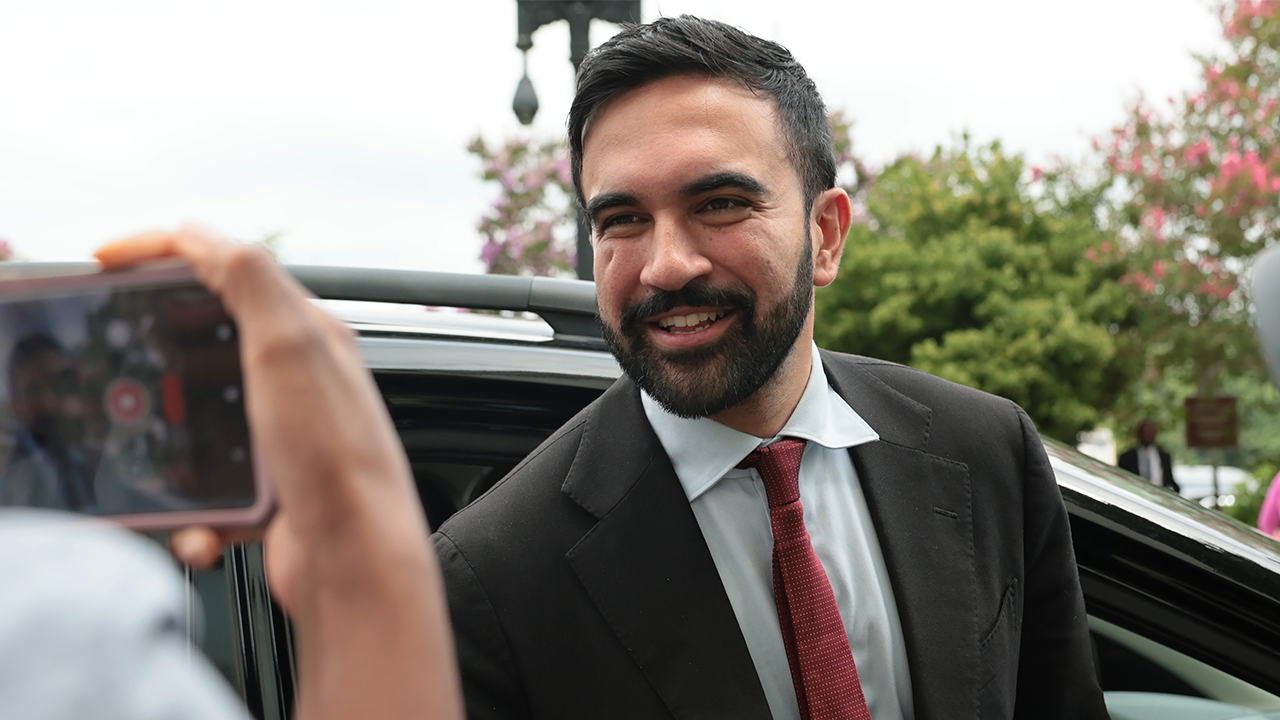Business
Elon Musk revived L.A. aerospace with SpaceX. Will it thrive without him?
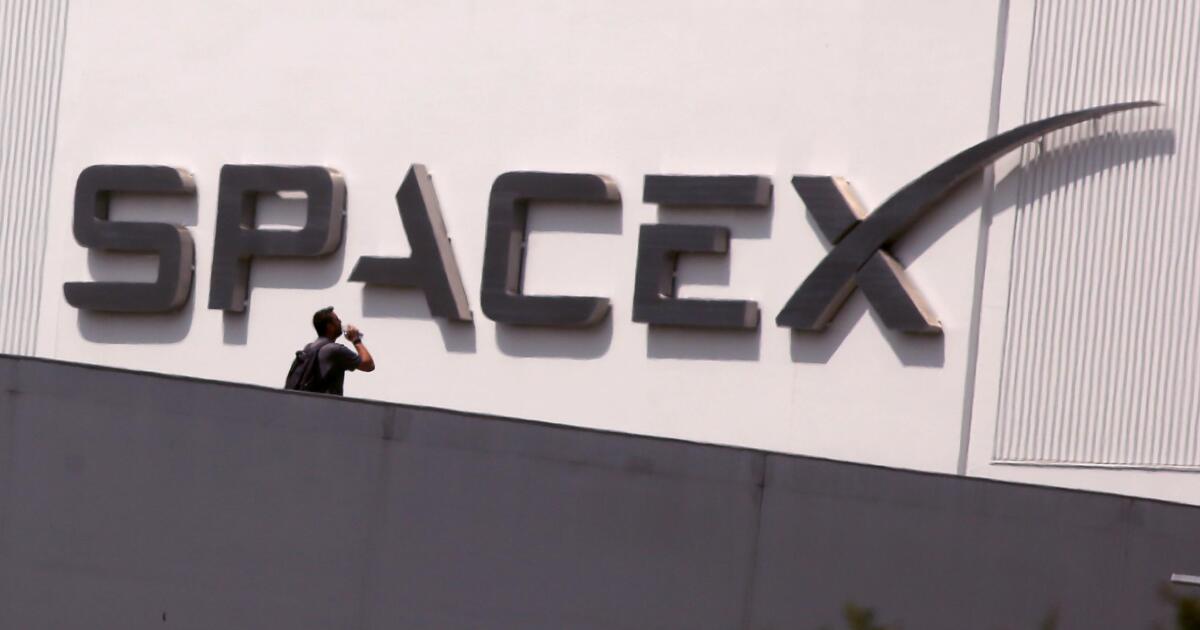
When Elon Musk decided to start a rocket company two decades ago, he headed down Interstate 5 and the 405 and didn’t stop until he reached the South Bay, the center of the region’s aerospace industry, hard hit by a drop in defense spending after the Cold War.
There, the Silicon Valley entrepreneur, flush with cash from the sale of PayPal, founded Space Exploration Technologies in 2002 and defied skeptics, building his startup into a $210-billion giant and fueling a revitalization of the shrunken industry.
This week, the Hawthorne company’s future in the region was thrown into doubt when Musk posted on X that he planned to move SpaceX’s headquarters to the outskirts of Brownsville, Texas, where it is developing its massive Starship rocket for planned trips to the moon and, someday, Mars.
It’s unclear what the fallout will be locally.
SpaceX hasn’t commented on how many jobs will be affected by the relocation, and industry observers say it’s likely the company will maintain significant manufacturing operations in Los Angeles County, where it employed about 6,000 people in 2023, according to an annual survey by the Los Angeles Business Journal.
But the relocation is undoubtedly a loss to the region’s revived space industry.
A leader in the space economy
“SpaceX has been one of the pillars of the Southern California new space economy,” said Kevin Klowden, the Milken Institute’s executive director of MI Finance. The move “is significant symbolically in that it shows Southern California isn’t indispensable in an industry where it clearly is a leader.”
The aerospace industry was pioneered in L.A. County, with the first rockets set off in the Arroyo Seco near Caltech in the 1930s — the humble origins of what was to become the Jet Propulsion Laboratory, a leader first in rocket and satellite development and later in interplanetary spacecraft.
Douglas Aircraft, Lockheed, Northrop and other companies built hundreds of thousands of planes during World War II and maintained defense work here. In Downey, North American Aviation built the command module of the Apollo 11 spacecraft that landed astronauts on the moon. Rockwell International built the space shuttles in Downey and Palmdale.
The massive defense spending cuts after the collapse of the Soviet Union devastated the industry, dropping employment in the county from about 130,000 in 1990 to less than half that a decade later — but with its heritage, talent pool and world-class universities, the region was a logical place for SpaceX to set up shop.
A new, smaller, Southern California aerospace economy has since developed, building on the remaining operations of legacy companies and technological advancements — even as other centers have emerged, such as Kent, Wash., where Jeff Bezos’ Blue Origin space company is located.
Virgin Galactic, the space tourism company founded by British billionaire Richard Branson in 2004, is based in Tustin and has its design and manufacturing operations in Mojave, where it also performs test flights. Its commercial operations are in New Mexico.
Rocket Lab, a maker of lightweight rockets that launch small satellites, moved its headquarters to Long Beach just three years ago.
People walk on a pier beneath the contrail from a SpaceX Falcon 9 rocket launched from Vandenberg Space Force Base on April 1 in San Clemente.
(Mario Tama / Getty Images)
And former SpaceX employees have founded dozens of startups. Crunchbase, which tracks venture capital and startups, tallies more than 50. Local ones include Relativity Space, a Long Beach maker of reusable rockets; Varda Space Industries, an El Segundo company developing drugs in low-Earth orbit; and L.A. telemetry startup Sift, which raised $7.5 million in venture funding last year.
“SpaceX isn’t unique, but it’s the star,” said Klowden, noting the “ecosystem” that has sprung up around it.”
While Musk’s declaration Tuesday was prompted by a public policy dispute — Gov. Gavin Newsom’s decision to sign a bill prohibiting school districts from mandating that teachers notify parents about a student’s change in gender identity — Musk has long complained about the state’s regulatory environment and has a history of tangling with government officials.
He moved Tesla’s headquarters from Palo Alto to Austin, Texas, in 2021 after Alameda County ordered the company in 2020 to halt production amid the COVID pandemic. Separately, the billionaire noted crime concerns in also tweeting Tuesday that he plans to move X, the social media platform formerly known as Twitter, from San Francisco to Austin.
Klowden said he believed Musk has been considering the idea of moving SpaceX, though it’s still unclear exactly whether Musk plans to transfer a handful of executives, additional employees or all of the operations, which is not seen as likely. Neither Musk nor SpaceX has offered clarification. The company did not respond to requests for comment.
City officials were also grappling with the announcement.
“We understand that business decisions are driven by a variety of factors, and we remain committed to fostering a thriving business environment in Hawthorne,” Alex Vargas, the city’s mayor, said in a statement. He added: “[W]e want to reassure our workforce and community that the city of Hawthorne is taking proactive steps to mitigate the impact of SpaceX’s potential relocation.”
Much of the skepticism regarding Musk’s SpaceX tweet revolves around how the Tesla move was carried out. The electric vehicle maker produces its Model Y SUV and new Cybertruck in Austin but still operates a factory in Fremont, where it makes multiple models. Last year, Tesla said it was opening a new global engineering headquarters in Palo Alto previously occupied by the headquarters of Hewlett-Packard.
A flight to Texas?
But some familiar with the company think the headquarters relocation announcement could presage a larger presence in Texas.
Tim Buzza, a former SpaceX vice president, said that while the company builds its workhorse Falcon 9 rocket and Dragon capsules that service the International Space Station in Hawthorne, the company’s future is the massive Starship rocket being developed at the Brownsville facility called Starbase on the Gulf of Mexico.
“The center for the next level of execution for SpaceX is Starbase. The direction and the momentum of the company is already moving to Texas,” said Buzza, who was one of the first five employees at SpaceX, worked there for 12 years and remains in contact with many at the company.
SpaceX is seeking approval to launch 90 rockets from Vandenberg Space Force Base by 2026, a sharp increase from its previous plans for the Santa Barbara County military base. Buzza said the launches are important for the Starlink satellite broadband network SpaceX is building, since they put the satellites into a polar orbit, complementing Florida launches that put them in an equatorial orbit.
However, the Starship rocket — taller and more powerful than the Saturn 5 that launched Apollo astronauts to the moon — could launch many more satellites than the Falcon 9. SpaceX has opened a new Starlink factory outside Austin, and last month Starship completed its fourth test flight from Starbase, dubbed its “Gateway to Mars.”
The company has been building its operations at Starbase and this month asked the Federal Aviation Administration for permission for up to 25 annual launches of Starship and its Super Heavy rocket, a more powerful derivative of its Falcon 9. The company operates an engine testing facility in McGregor, Texas.
Klowden questioned the company’s ability to move or attract large numbers of workers to the Brownsville area, at least in the immediate future, given the lack of housing and other infrastructure. But Buzza said SpaceX overcame many of the same issues in McGregor. He doesn’t think Musk would move Falcon 9 production or the Dragon capsule program from Hawthorne, because both may be phased out over time.
Still, even the loss of SpaceX’s executive operations to Texas would be a blow to Los Angeles and the Golden State, which have suffered a humiliating series of corporate defections over the last few decades. L.A.-area companies that have moved headquarters elsewhere include Lockheed, Northrop Grumman and more recently Aecom, a global engineering firm. Software giant Oracle left Redwood City in Silicon Valley for Austin in 2020 (and has since announced a move to Nashville).
“Whenever any company announces that they might or they will leave the region, it is not good for us. We definitely need to do a much better job in terms of business retention,” said Stephen Cheung, chief executive of the Los Angeles County Economic Development Corp.
However, he said the region’s aerospace economy is still robust and has shown an ability to evolve. After the bankruptcy last year of Branson’s separate Virgin Orbit rocket company, Rocket Lab acquired the defunct company’s former Long Beach headquarters, he noted.
That move mirrors SpaceX’s evolution. Its first location in L.A. County was in El Segundo, but as it grew it moved in 2007 into an old Northrop site in Hawthorne that had been converted into a factory for the production of Boeing 747 fuselages.
Aerospace Corp., an El Segundo federally funded nonprofit that provides scientific and technical support to the aerospace industry, announced in March that it was moving its executive offices to Virginia but simultaneously announced it was investing $100 million in its local campus.
The region is still home too for major defense work.
Northrop Grumman is building the new B-21 digital bomber in Palmdale, which is slated to replace the B-2 stealth bomber it built decades ago in Pico Rivera. The high desert city also is home to Lockheed Martin’s famed “Skunk Works,” a secretive, cutting-edge military research and development facility.
Klowden said that for some SpaceX workers a move to South Texas could be a no-go, and he expects other aerospace companies will attempt poach its workers. Indeed, Orange County asteroid mining company Astroforge Inc. said it was hiring in a reply to Musk’s SpaceX tweet.
Earlier this week, workers streaming in and out of SpaceX’s Hawthorne complex declined to speak to a Times reporter. However, a salesman for SpaceX vendor GF Machining Solutions who asked his name not be used, said he hopes Musk was not serious about relocating the headquarters to Texas.
“Well, I wouldn’t want that to happen, because I’ve lived in California all my life and I would lose that account if SpaceX moved,” the Corona resident said. “I’m not moving to Texas.”
Times staff writer Ashley Ahn and Bloomberg News contributed to this report.

Business
Commentary: She looked like a pro-worker Trump cabinet appointee. But now she's gutting the Labor Department
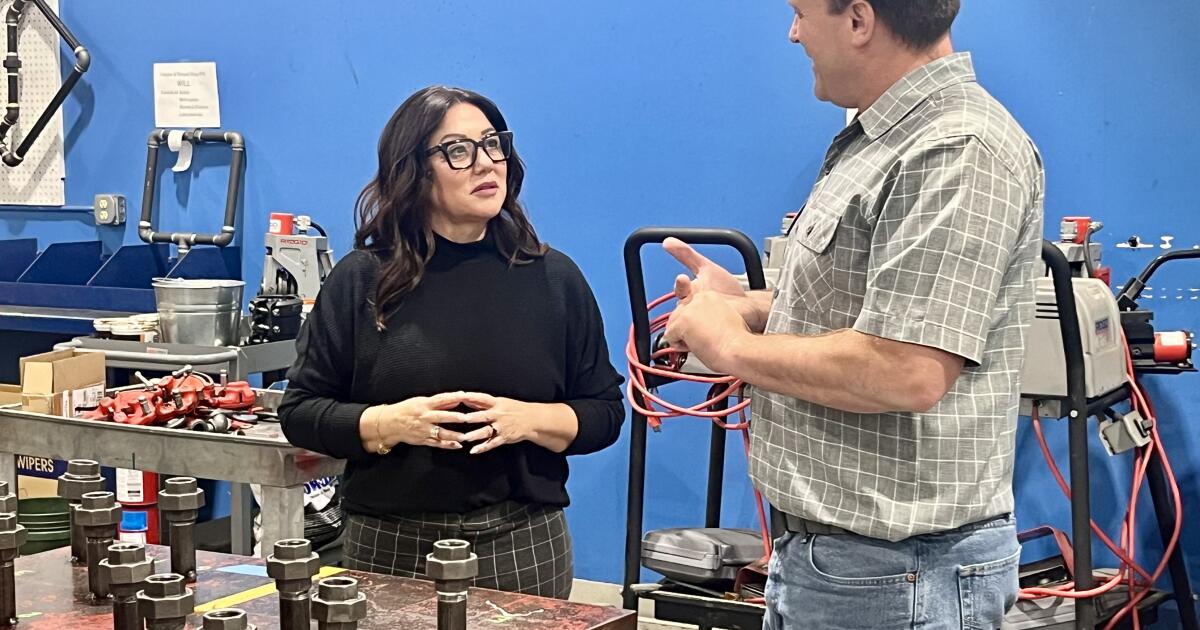
You may have detected a cautious note of relief among worker advocates when Donald Trump named Lori Chavez-DeRemer as his secretary of Labor.
During her sole term as a Republican member of Congress from Oregon (2023-25), Chavez-DeRemer was one of only three House Republicans to vote in favor of the so-called PRO Act, which would significantly strengthen collective bargaining rights. The measure passed the House in 2019 and 2021 but has been stifled ever since.
Her nomination and subsequent Senate confirmation elicited optimistic noises from the pro-union camp, as I reported in December.
This is an onslaught on people’s basic protections at work.
— Rebecca Reindel, AFL-CIO
“Her record suggests real support of workers & their right to unionize,” tweeted Randi Weingarten, president of the American Federation of Teachers, when Trump nominated Chavez-DeRemer in November.
AFL-CIO President Liz Shuler said she was “encouraged” by Chavez-DeRemer’s confirmation in March, “given her history of supporting the freedom of workers to organize, join unions and other fundamental values of the labor movement.”
The union leaders tempered their optimism with concerns about the anti-labor policies emanating from the Trump White House: Weingarten said she hoped the appointment signaled that “the Trump administration will actually respect collective bargaining and workers’ voices,” and Shuler said the AFL-CIO was “clear-eyed” that Chavez-DeRemer would be “joining an administration that’s been openly hostile to working people on many fronts in its first two months.”
Can you guess which way the ball has bounced?
On May 1, the Labor Department ordered its staff to cease enforcing a Biden administration rule that had raised the bar preventing businesses from designating their workers as independent contractors instead of employees, depriving those workers of the legal protections and wage and hour benefits typically due employees.
A few days later, Chavez-DeRemer submitted a proposed budget to Congress that would slash her agency’s discretionary funding by more than 35%, to $8.6 billion from $13.2 billion, and cut its workforce by nearly 4,000 full-time workers, a reduction of more than 26%. Among the services to be eliminated would be the Job Corps, which assists low-income youth to complete their high school education and provides job training and placement. (A federal judge in New York has blocked the suspension of Job Corps services and set a hearing for Monday.)
On July 1 came what could be the biggest blow. Chavez-DeRemer announced a plan to rescind 63 regulations that had been designed to help workers. With language that sounds cribbed from the MAGA playbook, she said her goal is to “eliminate unnecessary regulations that stifle growth and limit opportunity.”
She boasted of launching “aggressive deregulatory efforts in push to put the American worker first,” and added that “these historic actions will free Main Street, fuel economic growth and job creation, and give American workers the flexibility they need to build a better future.”
I’ve asked the Labor Department to provide specific rationales for the deregulatory actions but haven’t received a reply.
The effects, however, are clear. “Two-thirds of these have to do with worker health and safety protections,” says Rebecca Reindel of the AFL-CIO. “They’re being proposed to be either eliminated or severely weakened.”
Chavez-DeRemer’s actions as Labor secretary resemble less the image she fostered as a member of Congress than the policymaking of Trump’s first term. Then, as I wrote at the time, the Department of Labor was “a black hole for worker rights.” His second Labor secretary, Eugene Scalia (son of the late Supreme Court Justice Antonin Scalia), had made his name professionally as a corporate lawyer fighting pro-worker government initiatives.
The standards on the chopping block include those issued by the Occupational Safety and Health Administration, a unit of the Labor Department, that were developed after years of effort. OSHA standards, Reindel told me, take an average of seven years — and as long as 20 years — to draft. “This is an onslaught on people’s basic protections at work.”
One category of threatened regulations applies to standards for respirators and filters to screen out workplace pollutants including asbestos, arsenic and lead. The department proposes to eliminate requirements that workers exposed to occupational pollutants be medically evaluated to ensure that their respirators fit properly and don’t cause health problems on their own.
The agency, asserting that such rules are “unnecessarily prescriptive,” proposes to give employers “greater flexibility in the respirators they select for exposed workers.” Removing some of these regulations, Reindel says, “basically would allow employers to make the determination if a respirator is needed for specific chemicals. They’d give employers more flexibility at the expense of workers’ health.”
One of the more potentially far-reaching proposals would narrow the application of OSHA’s “general duty clause,” which requires employers to maintain safe workplaces even when no specific OSHA regulation applies. In the most notable case, OSHA cited the clause in fining SeaWorld of Florida $12,000 in connection with the 2010 killing of trainer Dawn Brancheau by an orca during a performance. SeaWorld sued to overturn the penalty but lost in a 2-1 decision by the federal appeals court in Washington, D.C.
The three-judge panel found that even though the dangers of cavorting with wild animals for a public show were understood, SeaWorld should have done more to protect its human performers. (Who represented SeaWorld in that case? Eugene Scalia.)
The department is proposing to exempt from the rule “professional, athletic, or entertainment occupations” that are intrinsically dangerous. In justifying its proposal, the department cites a dissenting opinion in the appellate case by then-Appeals Judge Brett Kavanaugh, who is now on the Supreme Court.
In his dissent, Kavanaugh maintained that the agency exceeded its Congressional mandate: “The bureaucracy at the U.S. Department of Labor has not traditionally been thought of as the proper body to decide whether to ban fighting in hockey, to prohibit the punt return in football, to regulate the distance between the mound and home plate in baseball, to separate the lions from the tamers at the circus, or the like,” he wrote. The Department of Labor now maintains that Kavanaugh’s analysis, even though it was a minority finding, was right.
More than 115,000 athletes, actors and other entertainers could be affected by the change, the agency acknowledges.
The department also proposes to rescind a 2024 regulation that guaranteed the right of migrant agricultural workers to host union organizers in company-owned housing.
The Biden administration asserted that the regulation was needed to “protect workers’ fundamental rights of association” and observed that the isolation of workers in company-furnished quarters and their “unique vulnerabilities renders them particularly at risk of … workplace abuses, labor exploitation, and trafficking.”
The department, however, cites several court rulings in red states that have held that the regulation was “an infringement on the property rights of employers.” Indeed, that was the reasoning of the Supreme Court in overturning a California law providing for similar access on farm property in 2021.
“The access regulation grants labor organizations a right to invade the growers’ property,” wrote Chief Justice John Roberts for a 6-3 majority, with the court’s three liberal justices dissenting. “It therefore constitutes a per se physical taking” without compensation.
Worker advocates fear that the July 1 announcement is a precursor of more rollbacks to come. “I think the announcement is just the beginning of their deregulation effort,” says Margaret Poydock, a senior policy analyst at the labor-affiliated Economic Policy Institute. “These 63 rules they referenced were just two days’ worth of posting.”
One rulemaking effort that worker advocates are watching closely involves heat-related injuries. A proposed rule was posted in August and is still under consideration, with bipartisan support; public hearings on the rule were completed earlier this month, and final action is expected by the end of September. The Trump administration hasn’t taken any steps to quash it, thus far. But it has been fiercely opposed by business interests.
The U.S. Chamber of Commerce, for instance, submitted a 20-page comment arguing that the proposal “would result in OSHA micromanaging workplaces, imposing unreasonable burdens, and creating confusion as to what employers would be required to do.”
The proposal, which would apply to almost all employers, would be triggered whenever employees were exposed to a heat index — a measure taking into account heat and humidity — of 80 degrees or higher for more than 15 minutes in an hour-long period.
In those conditions, employers would be required to supply cool drinking water, break areas with cooling and paid rest breaks, among other measures. A heat index of 90 degrees would require mandatory rest breaks of 15 minutes every two hours and other heightened measures.
In the absence of a specific federal heat regulation, workplaces are subject to the general duty clause. But that’s inadequate, worker advocates say. “The general duty clause is reactive — it addresses what happens once a worker is already exposed,” Poydock told me. “It does not prevent workers from becoming sick from heat or having heat stroke or dying from heat.”
The Chamber’s objection is that the current proposal is a “one-size-fits-all approach” that fails to account for regional conditions.
“Businesses operating in consistently high-heat regions, such as Arizona, Florida, and Texas, where these temperatures are the norm,” would be disproportionately affected. “People in hotter climates tend to be more acclimatized to heat, including working in temperatures above 80° F, and thus have a lower risk of heat injury or illness.”
The labor leaders who once saw a glimmer of light in Chavez-DeRemer’s appointment have seen their hopes dashed. Until recently, one might have said that the jury was out on whether she would be a good Labor secretary or another MAGA cabinet member. Now, sadly, the jury’s verdict is in.
Business
Should You Get a Heat Pump? Take Our 2-Question Quiz.

Heat pumps are the future of home heating. They’re essentially two-way air-conditioners that use electricity to heat in the winter — as well as cool in the summer — and are typically far more efficient than other systems. They reduce household greenhouse gas emissions significantly.
They may also save you money on your monthly bills if you own a home. Answer just two questions below and we’ll give you a rough estimate:
What do you heat with currently?
Where do you live?
Answer the two questions and we’ll see how much you can save. Or, keep reading.
Don’t know what a heat pump is? You may already have seen one. It looks a lot like a typical air-conditioner, with a big box that sits just outside a house; inside, you might see small boxes mounted to the wall, or a single large indoor unit, out of sight, connected to vents.
In winter, heat pumps transfer heat from outside to inside. (Even in very cold temperatures, it’s still possible to extract heat from the air outside.) In summer, they do the opposite.
Because of how efficiently they do this, heat pumps are a critical piece of the green energy transition: One estimate suggests putting a heat pump in every home could reduce U.S. emissions by 5 to 9 percent.
They’re expensive to install but often qualify for subsidies. And they can save some homeowners hundreds or thousands of dollars each year by lowering their utility bills, for both heating and cooling.
But that’s not yet true for everyone, everywhere.
Share of households that would…
These numbers, and the information in the quiz above, come from a New York Times analysis that combines data on fuel and electricity costs around the country with estimates of how much energy it takes to heat many different kinds of houses, from research done by the National Renewable Energy Laboratory.
More than 80 percent of U.S. households would probably see their bills go down if they installed a heat pump.
But the rest would probably end up with higher bills — mostly people who use natural gas right now, given its low cost.
Nearly all households heating with propane, fuel oil or older electric forms of heating would save money by switching to a heat pump, but only about two-thirds of those currently on natural gas would.
How you currently heat is one major factor in your potential savings; the others are where you live and how the cost of electricity compares with other fuels in your area.
For households that currently heat with expensive fuels like propane and fuel oil, a heat pump is almost always a good bet. This is why Maine, which relies on fuel oil, has become a big adopter.
And a heat pump is significantly more efficient than electric furnaces or baseboards. The savings are biggest in the parts of the country that stay colder, longer. But there’s money to be saved in the South, too, in both the mild winters and the hot summers: South Carolina and Florida have some of the current highest rates of heat pump usage.
For households that currently heat with less expensive natural gas, however, the financial picture is much more mixed. Whether you save — or lose — depends heavily on your geography. And the savings are often smaller.
In the South, electricity is relatively cheap, and temperatures are mild. That makes switching from natural gas to a heat pump an easier sell. Modern heat pumps work in very cold temperatures, but they operate at their highest efficiency during mild weather.
In colder parts of the country, heat pumps are somewhat less efficient. They also give you central cooling, which can raise prices in the summer if you relied on fans before.
But the biggest problem in the North isn’t the weather — it’s the difference between the cost of electricity and the cost of gas.
On average, a heat pump is three to four times as efficient as a natural gas furnace. That means if electricity is only twice as expensive as natural gas for the same amount of energy, a heat pump is a good deal — as is the case in Georgia. But when electricity is five times as expensive as gas, as in Michigan, it’s a much harder sell.
Ratio of electricity to natural gas cost, for the same amount of energy
These are just averages, and other factors will influence your actual financial picture. For one, prices for both electricity and gas vary a lot within states. Rates in some places can also change depending on the time of day or the season, and some utilities offer lower rates specifically for heat pump customers. We also can’t know exactly how prices will rise or fall next year — we can only make guesses based on previous years’ costs.
Your choice should also take into account how well insulated your house is; whether you have solar panels; the efficiency level of the heat pump you’re considering; and whether you keep your boiler or furnace as a backup in colder temperatures, known as a “dual fuel” setup. Many households even in colder parts of the country, with high electricity costs, could still see savings from a heat pump. These are all things our calculations can’t help you with. The only way to be certain is to ask a contractor. (Ideally more than one.)
How long you’re going to stay in your house is important too: Heat pumps have high upfront costs, sometimes twice as much as that of a new gas furnace. Many states and utilities offer rebates to help: Massachusetts homeowners can get $10,000. (Republicans in Congress ended a federal tax credit that gave $2,000 or more toward a heat pump installation, though heat pumps installed this year still qualify.)
And if you already have central air for cooling, a heat pump is more likely to make financial sense. Installing one may be more expensive than replacing your furnace — or your central air-conditioning — but it can be cheaper than replacing both.
Despite their price tags, heat pumps have outsold furnaces for three years running, according to data from the Air-Conditioning, Heating, and Refrigeration Institute.
Heating units sold in the U.S.
Meanwhile, summers are getting hotter. If you don’t have central air yet, you might want it at some point.
And if you’re thinking about climate change in addition to your finances, switching to a heat pump will cut most houses’ carbon emissions significantly.
Median household emissions reduction from installing a heat pump
In some very cold places, the emission reductions are huge: The median house in Minnesota could emit around five fewer tons of carbon each year by switching to a high-efficiency heat pump, according to modeled data from the National Renewable Energy Laboratory. That’s a greater reduction than if you went car-free for a year (if you drive a gas car). And it’s around one-third of the average U.S. resident’s greenhouse gas emissions in a year.
Paradoxically, some of the places where a heat pump could slash emissions the most — including parts of the Northeast and Midwest — are the places where it could be a financial detriment right now. Still, for some, paying a little extra to reduce their carbon footprint might be worth it.
About the data
Cost calculations use a 2024 dataset from ResStock, a model of the U.S. housing stock by the National Renewable Energy Laboratory (NREL). ResStock contains estimates of the amount of energy it would take to heat and cool houses with an original heating source and with a heat pump. Houses that currently have a heat pump were excluded.
The dataset includes homes that did not have central cooling before the heat pump, which raises costs after the transition. It also relies on weather data collected from 1991 to 2005.
For electricity and natural gas prices, the Upshot used 2023 state-level sales, revenue and customer data from the Energy Information Administration (EIA) and prior NREL research to calculate the cost per unit of energy. For propane and heating oil, the Upshot used EIA data from 2023 on state-by-state prices, or a national average if data was missing.
The Upshot assigned a basic Energy Star heat pump (SEER2 15.2, HSPF2 7.8) to houses in warmer climates and a higher-efficiency cold climate heat pump (SEER2 19, HSP2 9.8) to colder areas. Both have supplemental electric heating.
For county-level results, the Upshot used county-only data when there were at least 50 houses using that fuel in that county, and state-level medians when there were fewer.
Business
These California metro areas are among the most AI-ready in the nation
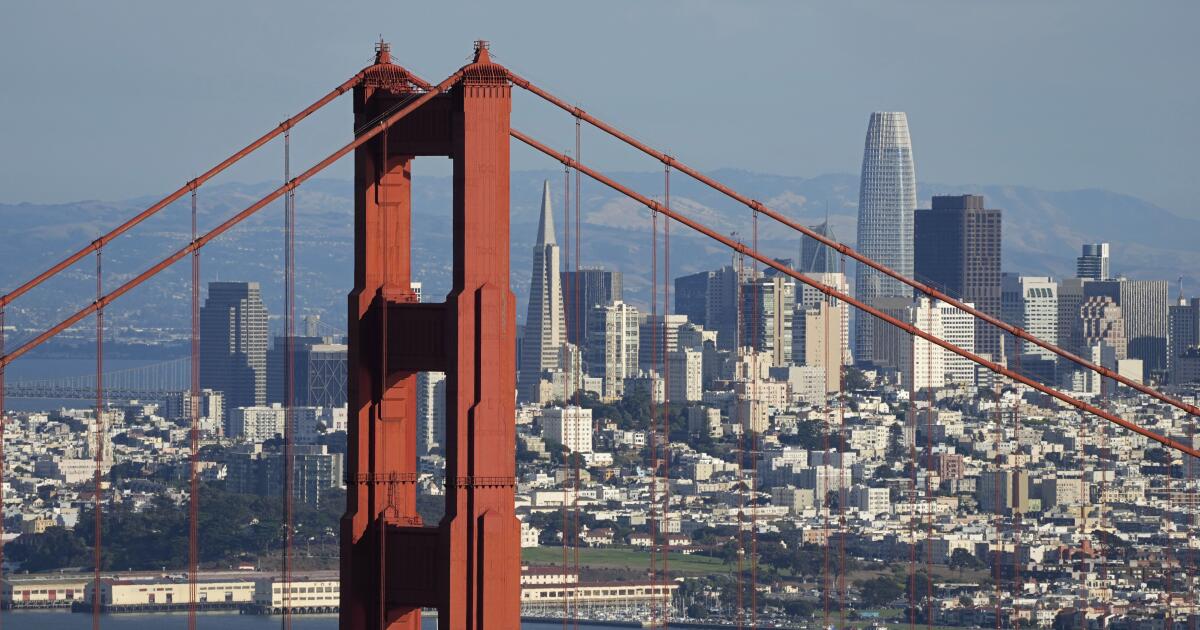
Despite suggestions it has been losing its edge, California is way ahead of others when it comes to the hottest technology right now: artificial intelligence.
The regions around San Francisco, San José and Los Angeles are among the best prepped for AI in the country, according to a report released Wednesday by the Brookings Institution.
The Washington think tank dubbed the San Francisco and San José metropolitan areas “superstars” when it comes to AI readiness. Three out of the top 10 city regions most ready for AI are in California, according to the report. No other state has more than one region in the top 10. Texas had none in Brookings’ top 10. Austin was ranked 11th.
With tech giants such as Google, Meta and Nvidia headquartered in the area and OpenAI securing a record-breaking $40 billion in funding this year, it’s no surprise that the Bay Area cities dominate.
“They really are in a class of their own, given the sheer scale, dominant big tech headquarters, massive research labs and venture capital,” said Mark Muro, a senior fellow at the metropolitan policy program at Brookings, who co-wrote the study.
Los Angeles, home to top-tier universities, film studios, defense tech startups, social networks and dating apps, is also a big AI contender. The Los Angeles metro area, which includes Long Beach and Anaheim, is part of the second-highest cluster of AI-ready regions Brookings calls “star hubs,” the report said.
The analysis shows how California metropolitan areas are among the most prepared for AI, technology with the potential to reshape industries as diverse as healthcare and entertainment. The San Diego metro area was also part of a cluster deemed more ready for AI. It was ranked 12th.
Brookings examined venture capital funding, AI job postings, the number of computer science degree holders, patents and other data. The information gathered about 387 metro areas provided insight about whether certain places have more or less AI talent, innovation and adoption.
After analyzing this data, the think tank clustered metro areas into six different groups, indicating which are the most AI-ready. The groups are superstars, star hubs, emerging centers, focused movers, nascent adopters and others. Two metro areas are considered superstars while 28 are star hubs.
The less AI-ready groups lagged behind when it came to major tech employers, computer science graduates, patents, contracts and other factors. Metro areas that included Stockton, Modesto, Visalia and Bakersfield in California were part of the “others” cluster.
Rural counties and small metro areas fell behind when it came to AI talent and innovation, the report said. The number of AI startups and venture capital funding were “virtually nonexistent” in these areas.
AI has the potential to create new jobs, but it could also displace mundane and tedious tasks, reshaping the job market. Making sure that AI doesn’t just put tech workers and other people out of work is one downside more AI-ready metro areas will have to watch out for, Muro said.
Mass layoffs in the tech industry, the release of AI tools that can code and do other tasks, and executive remarks have heightened concerns that companies will shrink their workforce.
Metropolitan areas that included New York, Boston, Washington, Chicago, Atlanta and Seattle were also deemed more AI-ready than other places. Several Texas metropolitan areas that encompass Austin, Dallas, Houston or San Antonio are part of the “star hubs” cluster.
The region around New York was ranked No. 1 for AI readiness for the sheer volume of talent, AI job postings and high-performance computing usage. But researchers also considered other factors such as a region’s density when coming up with clusters and wanted to highlight the Bay Area’s advantage.
The tech industry is growing in Texas, where Austin bears the nickname “Silicon Hills.” Some of the world’s largest tech companies, including Google, Meta and Amazon, have offices in Austin. And some entrepreneurs, including Elon Musk, have moved the headquarters of their companies to Texas in recent years.
The Austin area has a large pool of computer science, engineering and math graduates, but the San Francisco Bay Area still has more AI startups, venture capital deals, patents and U.S. worker profiles with AI skills, data from Brookings show.
The AI economy is massively concentrated on the West Coast, but cities throughout the United States are catching up. The Bay Area, Muro said, will probably remain a central AI hub in the future.
“They will likely not displace the importance of the Bay Area, but they will complement it,” he said.
-

 News1 week ago
News1 week agoVideo: Trump Compliments President of Liberia on His ‘Beautiful English’
-

 News7 days ago
News7 days agoVideo: Clashes After Immigration Raid at California Cannabis Farm
-

 Politics1 week ago
Politics1 week agoJournalist who refused to duck during Trump assassination attempt reflects on Butler rally in new book
-
Business1 week ago
Commentary: Does America need billionaires? Billionaires say 'Yes!'
-

 News1 week ago
News1 week agoTrump heads to Texas as recovery efforts from deadly flood continue
-

 World7 days ago
World7 days agoNew amnesty law for human rights abuses in Peru prompts fury, action
-
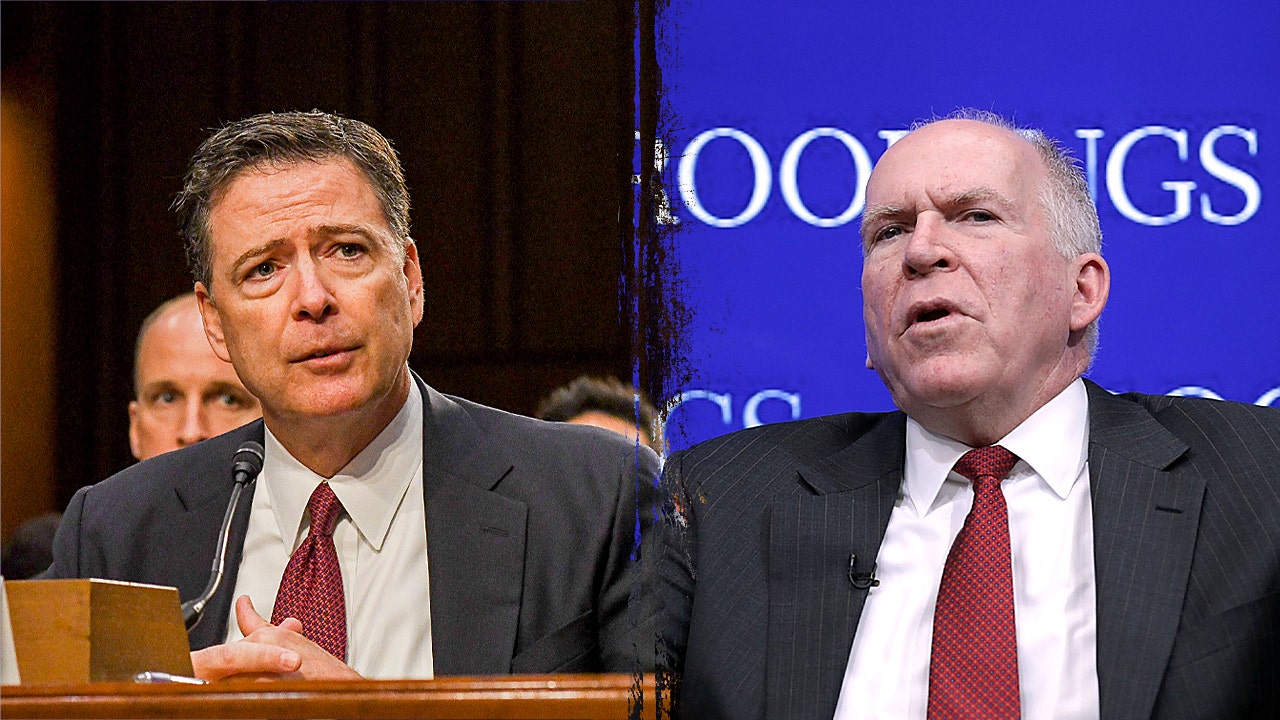
 Politics1 week ago
Politics1 week agoObama officials used dossier to probe, brief Trump despite knowing it was unverified 'internet rumor'
-

 News1 week ago
News1 week agoDOGE keeps gaining access to sensitive data. Now, it can cut off billions to farmers











